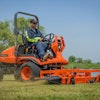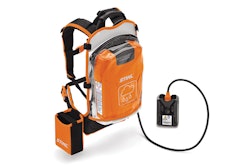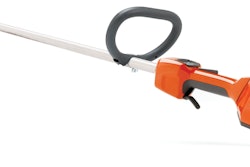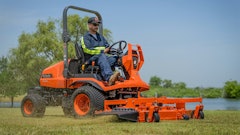Mark it down, because I’m willing to go on the record right here and now. Sometime within the next 50 years, gasoline-powered handheld equipment will have become extinct.
Some folks think it will happen much sooner than that. But a 50-year window is all I can commit to in my prognostication, because I’ve seen how resistant to change much of this industry is, particularly when it seems difficult to economically justify a change. Short of a government regulation or perhaps a shell-shocking jump in gas prices, I think the migration to battery among professionals will continue to happen slowly.
Look at the automobile industry. I remember nearly nine years ago when gas popped to $4 a gallon for the first time. Electric automobiles became all the rage; they were the future. Nine years later, electric cars have about 1% of the U.S. auto market, according to January data reported by EVObsession.com. That said, EVObsession also reports that January sales were up 59% compared to a year ago. Additionally, Forbes reports that 2016 sales were up 37% over 2015. So product adoption is definitely growing.
I wish I could put a number on battery product adoption in the landscaping industry. Manufacturers remain pretty guarded with proprietary data like that, which I understand. Kris Kiser of the OPEI was kind enough to go on the record in saying that electric now outsells gas in the string trimmer, hedgetrimmer and leaf blower product categories (see feature story). But that includes corded. That also includes homeowners. So the best we can do, for now, is to simply look at the products manufacturers are introducing and the number of landscape contractors using them—both of which are growing.
I believe contractor use would grow much faster if contractors were given some kind of financial incentive, similar to what has been done with propane mowers. There is no disputing the success contractors who’ve switched to propane mowers have had. There is also no disputing the influence rebates have had in enticing contractors to switch to propane, helping to defray the price premium and additional upfront cost.
When switching to battery-powered equipment, contractors also pay a higher upfront cost due to the need for at least one battery and a reliable charger. Since they won’t have to buy gas, oil and filters, etc., they’ll make that money back over time. But realizing the positive ROI requires patience, maybe over the course of a season or two. Some contractors can find the necessary patience, but many cannot.
Do you have the patience? If you’ve been able to get to the end of this column, that’s a good start. The next step is to check out our extensive battery coverage in this issue. And while you’re at it, don’t skip over our feature story on what’s new in engines. There has been a lot of innovation there, too, as manufacturers also seek to help contractors save time and reduce costs.
Yes, battery is growing—but engines aren’t going anywhere anytime soon. It’s best to continue learning as much as you can about both, including how each impacts your vision statement, market position, productivity and bottom line.





















